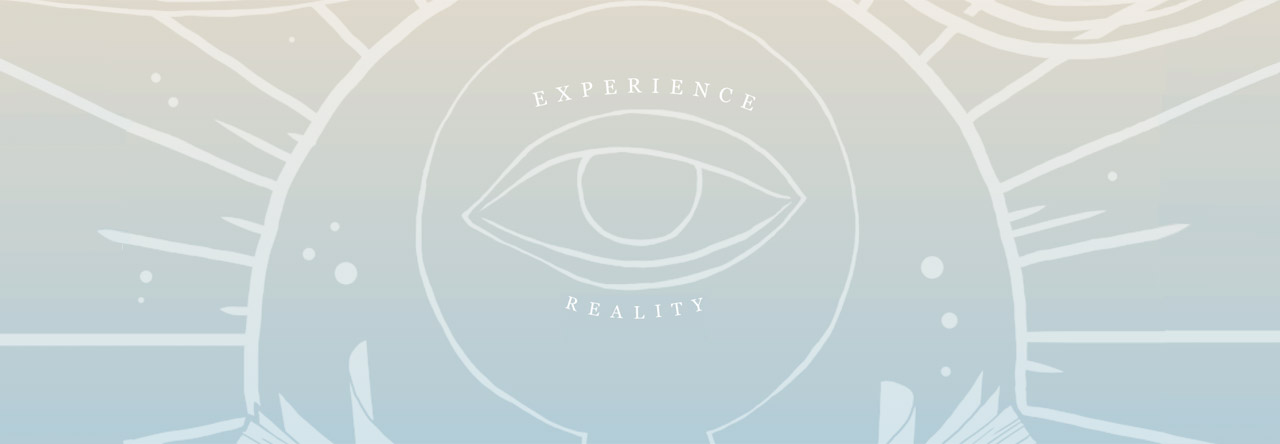The New Rules of Retail is the most important book I’ve read on small business retailing since Paul Hawken’s Growing a Business nearly 25 years ago. A couple of other booksellers at Lemuria have also read New Rules. We all feel this book provides crucial insight as independent bookstores reposition in the book industry. To be a successful small business, you must understand the changes in your competitors. I believe New Rules sees the future.
Lewis and Dart begin by defining the three waves in the history of American retail.
 Wave 1 (1850-1950): Marked by the power of the producer—producers distributed their products when and how they chose—“Build it and they will come.” Producers struggled to keep up with demand. Catalogs are delivered to the rural customer. Customers also begin to move from rural to urban areas. Sears & Roebuck targeted rural populations who had limited access to stores.
Wave 1 (1850-1950): Marked by the power of the producer—producers distributed their products when and how they chose—“Build it and they will come.” Producers struggled to keep up with demand. Catalogs are delivered to the rural customer. Customers also begin to move from rural to urban areas. Sears & Roebuck targeted rural populations who had limited access to stores.
.
.
 Wave 2 (1950-up to our present time): Marked by the evolution of category killers. From malls to big box stores, their strategy was to offer everything in one product category at discount prices. The markets became saturated and consumers were empowered with the superfluous selection. Sellers had to find a way to add value to differentiate it from their competitors. “Capitalism unbound.” Amazon’s distribution centers provide for an unfathomable variety of products.
Wave 2 (1950-up to our present time): Marked by the evolution of category killers. From malls to big box stores, their strategy was to offer everything in one product category at discount prices. The markets became saturated and consumers were empowered with the superfluous selection. Sellers had to find a way to add value to differentiate it from their competitors. “Capitalism unbound.” Amazon’s distribution centers provide for an unfathomable variety of products.
 Wave 3 (present time, early stages): Final shift from producer power to consumer power. Access to more and cheaper goods leads to quicker and easier access. Powered with information from the Internet, consumers have total power over what they buy and how much they pay for it. Consumers also begin to think about quantity versus quality. Who thought you could sell shoes online? Zappos does with unparalleled customer service.
Wave 3 (present time, early stages): Final shift from producer power to consumer power. Access to more and cheaper goods leads to quicker and easier access. Powered with information from the Internet, consumers have total power over what they buy and how much they pay for it. Consumers also begin to think about quantity versus quality. Who thought you could sell shoes online? Zappos does with unparalleled customer service.
The Great Recession has helped to cause a paradigm shift in terms of how customers value goods and services. This new understanding of value by the consumer proposes that price no longer equals value and that value is no longer determined by a price. This means that the customer is going through an epic transformation. The days of trying to get the customer to come to you are over; you have be in your customer’s world.
Customers are now beginning to redefine their consumer values. In doing so, they are self-actualizing their buying habits as they redefine what it means to be happy and satisfied. Buying habits show that customers are looking for experiences as opposed to accumulating more stuff. The experience—a neurological connection—must be unique and it also must be something that the customer has co-created with the seller.
Nobody understands value better than the customer. Talking to or at customers is fading as a neurological connection from retailer to actualized customer is growing. As a result, advertising and marketing are in a major transition stage.
 Sweeping retail changes are just beginning. Entire industry structures are being reinvented and transformed. With customer actualization, the control of the value change is much more challenging.
Sweeping retail changes are just beginning. Entire industry structures are being reinvented and transformed. With customer actualization, the control of the value change is much more challenging.
The revolutionary transformation of retailing is just beginning. Here are just a few Lewis and Dart’s major predictions for Wave 3:
1. Fifty percent of retailers and brands will disappear because the business models cannot be changed.
2. The ultimate collapse of traditional retail/whole sale business model is now clearly visible.
3. Major box stores will roll out smaller localized neighborhood stores.
4. Amazon will open brick and mortar showrooms.
5. Box retail stores will become hybrid enclosed mini-malls. In the case of Barnes & Noble, I predict that real books may evolve to a second or third inventory tier.
I suggest that an independent book seller who wants to still be open in five years should read and study The New Rules of Retail. Lewis and Dart have helped Lemuria begin to restructure and redefine our community presence.
I feel that for every small retail business person, reading New Rules is a must. Use the work of Lewis and Dart to look inwardly at yourself and outwardly at your competition. A challenging message comes across loud and clear.
Collapse or Convert.
The New Rules of Retail: Competing in the World’s Toughest Marketplace by Robin Lewis & Michael Dart (Palgrave, 2010)
The Bookstore Key Series on Changes in the Book Industry
Finding “Deep Time” in a Bookstore (March 8th) Reading The New Rules of Retail by Lewis & Dart (March 3) The Future Price of the Physical Book (Feb 18) Borders Declares Bankruptcy (Feb 16) How Great Things Happen at Lemuria (Feb 8th) The Jackson Area Book Market (Jan 25) What’s in Store for Local Bookselling Markets? (Jan 18) Selling Books Is a People Business (Jan 14) A Shift in Southern Bookselling? (Jan 13) The Changing Book Industry (Jan 11)
yyyy



 On February 18th, the grandson of Ludwig Bemelmans, author of the Madeline series, was here at Lemuria signing his new book,
On February 18th, the grandson of Ludwig Bemelmans, author of the Madeline series, was here at Lemuria signing his new book, 


 For folks that grew up in the 80’s the America’s Most Wanted TV show was part of life. The Fox network was new and starting in 1988 we watched America’s Most Wanted most every Saturday night. We were also a generation that grew up with the fear of crime: kidnappings, murder, etc. We saw it on TV and in the case of AMW it was and is real, very real. We may have been the first generation that wasn’t let out of our parents’ sights.
For folks that grew up in the 80’s the America’s Most Wanted TV show was part of life. The Fox network was new and starting in 1988 we watched America’s Most Wanted most every Saturday night. We were also a generation that grew up with the fear of crime: kidnappings, murder, etc. We saw it on TV and in the case of AMW it was and is real, very real. We may have been the first generation that wasn’t let out of our parents’ sights. To me John Walsh, the host of AMW, was just another TV host. My parents had introduced me to Dragnet years earlier and I saw a similarity in the shows – Walsh’s deadpan presentation. I didn’t know at the time where his passion came from. Maybe my parents told me, but I don’t think I knew until much later that Walsh’s crusade for bringing criminals to justice had a very personal origin. In 1981 John and Reve Walsh’s 6 year old son was kidnapped and murdered.
To me John Walsh, the host of AMW, was just another TV host. My parents had introduced me to Dragnet years earlier and I saw a similarity in the shows – Walsh’s deadpan presentation. I didn’t know at the time where his passion came from. Maybe my parents told me, but I don’t think I knew until much later that Walsh’s crusade for bringing criminals to justice had a very personal origin. In 1981 John and Reve Walsh’s 6 year old son was kidnapped and murdered. For me this story represents so much of why our childhood was the way it was and is an origin story for our own parenting paranoia. Now in
For me this story represents so much of why our childhood was the way it was and is an origin story for our own parenting paranoia. Now in 

 Warrior pose uses key words like “strong” and “focused”. On the back, illustrations and a small amount of text help you and your little one get into the pose. Usually two questions follow each pose to use with a more mature child. Warrior pose brings up trust with these questions: “What does it mean to be trustworthy?” and “Are you trustworthy?”
Warrior pose uses key words like “strong” and “focused”. On the back, illustrations and a small amount of text help you and your little one get into the pose. Usually two questions follow each pose to use with a more mature child. Warrior pose brings up trust with these questions: “What does it mean to be trustworthy?” and “Are you trustworthy?” I have used these cards with a kids yoga class. Laying the cards out on the floor, we worked together to pick out which yoga poses we wanted to do and then we decided on the best order for the poses. It worked well for kids who might other wise have a hard time getting focused on yoga. The partner poses were great for supporting interaction and simple fun. These cards also help to give meaning to each pose before you try to actually do them together. Breathing and a few moments of quiet? Yes, we did that, too.
I have used these cards with a kids yoga class. Laying the cards out on the floor, we worked together to pick out which yoga poses we wanted to do and then we decided on the best order for the poses. It worked well for kids who might other wise have a hard time getting focused on yoga. The partner poses were great for supporting interaction and simple fun. These cards also help to give meaning to each pose before you try to actually do them together. Breathing and a few moments of quiet? Yes, we did that, too.











 Mark Richard is the author of two award-winning short story collections, The Ice at the Bottom of the World and Charity, and the novel Fishboy. His short stories and journalism have appeared in the New York Times, The New Yorker, Harper’s, Esquire, Vogue, and GQ. He is the recipient of the PEN/Hemingway Award, a National Endowment for the Arts fellowship, and a Whiting Foundation Writer’s Award. He lives in Los Angeles with his wife and their three sons.
Mark Richard is the author of two award-winning short story collections, The Ice at the Bottom of the World and Charity, and the novel Fishboy. His short stories and journalism have appeared in the New York Times, The New Yorker, Harper’s, Esquire, Vogue, and GQ. He is the recipient of the PEN/Hemingway Award, a National Endowment for the Arts fellowship, and a Whiting Foundation Writer’s Award. He lives in Los Angeles with his wife and their three sons.